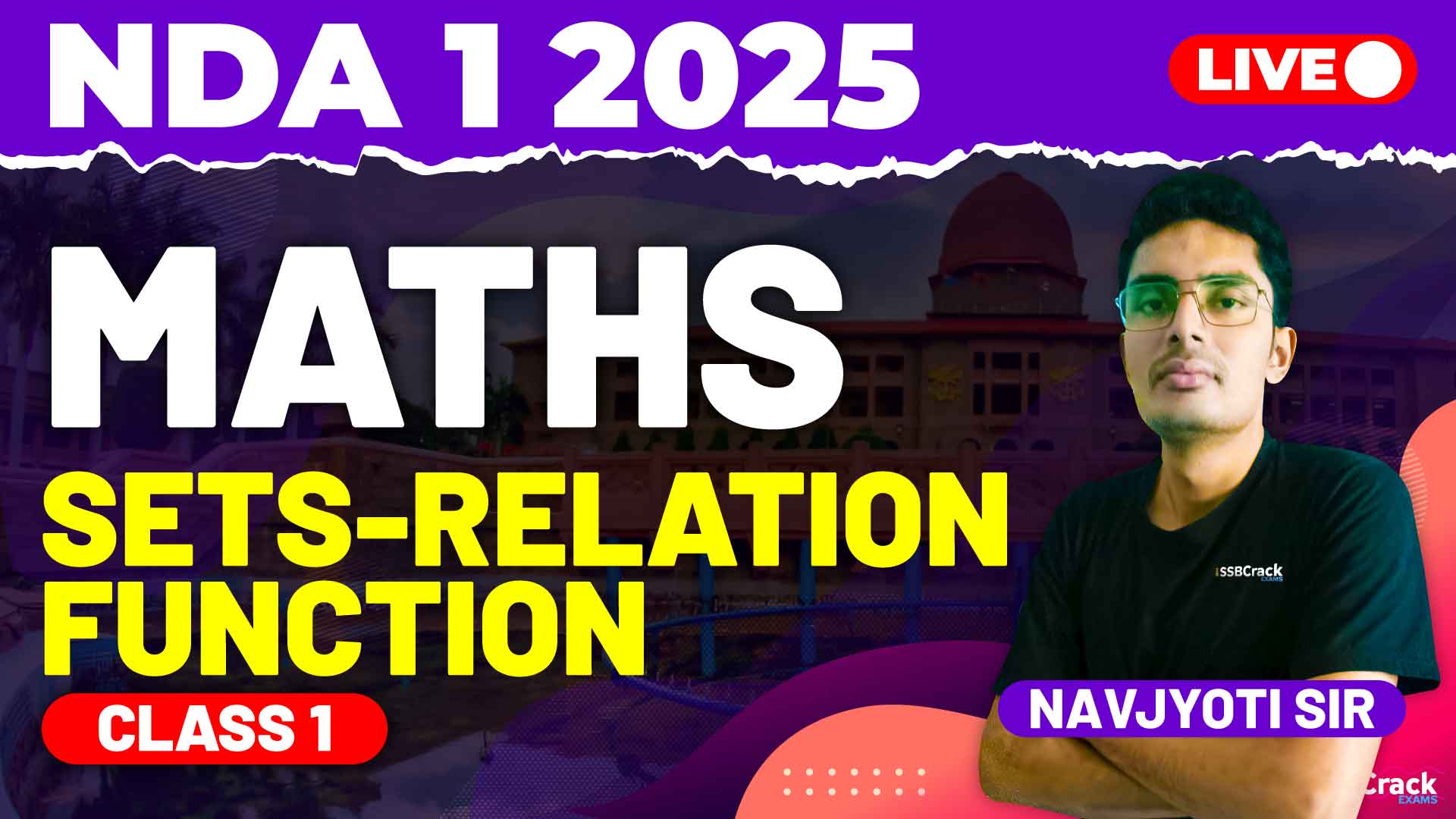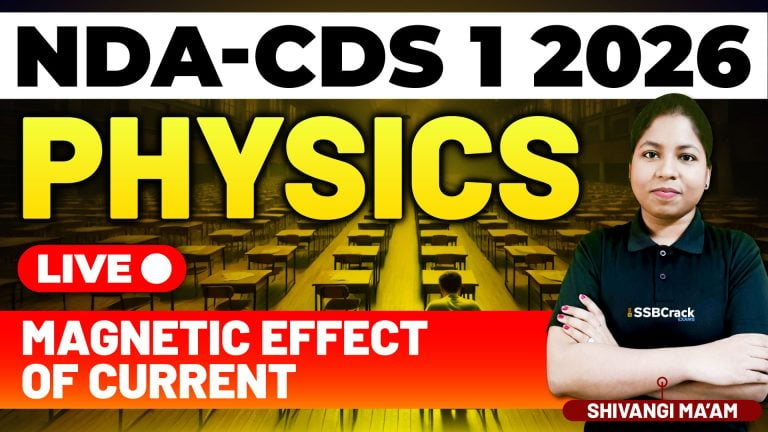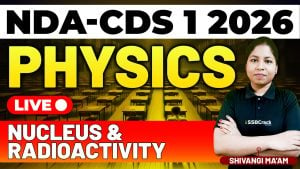The topic of Sets, Relations, and Functions is an essential part of the National Defence Academy and Naval Academy (NDA-NA) Exam – Paper I (Maths). A recent class delved into the fundamentals of sets, focusing on key concepts such as the definition of sets, methods of representing sets, types of sets, operations on sets, and the use of Venn diagrams to visualize set relationships. The session aimed to clarify these important sub-topics and their applications, especially in solving multiple-choice questions (MCQs) relevant to the NDA-NA exam.
In this blog, we will review the concepts discussed in the class, explore strategies for effectively preparing for this topic, and offer practical tips for success in the exam.
Sets and Their Applications
The class began by introducing the concept of a set, emphasizing how sets are used to represent collections of objects, numbers, or elements that share a common property. From this foundation, the discussion moved into specific areas, as outlined below:
1. Definition of a Set
A set is simply a collection of well-defined objects, often referred to as elements. These elements can be numbers, people, letters, or anything else that fits a certain criteria. Understanding what constitutes a set is crucial for grasping the subsequent concepts in this topic.
2. Methods of Representing Sets
The class focused on two key methods for representing sets:
- Listing/Roster Method: This method involves listing all elements of a set within curly brackets. It’s a straightforward way to display sets when the number of elements is finite and manageable.
- Set-Builder Notation: In this method, instead of listing all elements, a rule or property that defines the set is given. This approach is particularly useful when dealing with larger sets or sets that follow specific properties.
3. Types of Sets
The class also discussed different types of sets, a topic that often appears in the NDA-NA exam:
- Empty Set (Null Set): A set with no elements.
- Finite and Infinite Sets: Sets that have a limited or unlimited number of elements.
- Equal and Equivalent Sets: Sets that either have the same elements or the same number of elements.
- Subset and Superset: The concept of one set being contained within another, and its opposite.
Understanding these types is crucial for solving problems that compare sets or involve operations on multiple sets.
4. Operations on Sets
The operations on sets, such as union, intersection, and complement, were a major part of the class. These operations are used to combine or relate sets in different ways:
- Union of Sets: This operation merges two sets into one, containing all elements from both sets.
- Intersection of Sets: The intersection refers to the common elements that appear in both sets.
- Complement of a Set: This involves finding all elements not in a given set, usually within a universal set.
Students practiced applying these operations through MCQs, which tested their ability to manipulate and understand sets in various scenarios.
5. Venn Diagrams
Venn diagrams are a graphical tool used to visualize sets and their relationships. The class highlighted how these diagrams can simplify problems involving set operations, especially in questions that involve multiple sets. Understanding how to represent sets using Venn diagrams is key for solving complex problems quickly and efficiently in the exam.
Strategies for Preparing Sets, Relations, and Functions for NDA-NA Exam
Given the breadth of this topic, it’s important to adopt a well-rounded approach when preparing for sets, relations, and functions in the NDA-NA exam. Below are some strategies recommended during the class to help students build a strong foundation and perform well in the exam.
1. Master the Basics
Start by ensuring a strong understanding of the fundamental concepts. Knowing the precise definition of a set and the types of sets will provide a solid base for approaching more complex questions. Familiarity with the methods of representing sets, both through listing and set-builder notation, is also essential.
2. Focus on Set Operations
Operations on sets are likely to feature heavily in exam questions. Practice combining sets using union, intersection, and complement. Understand how these operations change the elements of a set and practice solving problems that involve multiple sets.
Many questions can be simplified by recognizing patterns in set operations. Make sure you can identify when to apply each operation and how to manipulate sets using them.
3. Practice with Venn Diagrams
Venn diagrams are invaluable when dealing with problems involving multiple sets. Practice visualizing set operations and relationships using these diagrams. This will help you solve complex problems with greater clarity and efficiency. Familiarize yourself with interpreting Venn diagrams and drawing them based on given set relations, as these questions are common in the NDA-NA exam.
4. Work Through Previous Years’ Papers
Solving questions from previous NDA-NA exams is one of the best ways to prepare for this topic. By working through these papers, you can familiarize yourself with the types of questions that are likely to appear and the common traps or mistakes students often make. Regular practice will also boost your speed and accuracy.
5. Understand the Properties of Relations and Functions
While this class focused more on sets, relations and functions are closely linked and often appear together in exam questions. Make sure you understand how sets relate to each other, and how functions map elements from one set to another. This will help you tackle more advanced questions that involve both sets and functions.
6. Time Management and Practice
As with any topic, time management is key in the NDA-NA exam. Practice solving set-related questions under timed conditions to improve your efficiency. Focus on quickly identifying the type of problem and the appropriate approach, whether it involves set operations, Venn diagrams, or relations.
7. Avoid Common Mistakes
Some common mistakes students make in set theory include:
- Confusing the types of sets (e.g., equal versus equivalent sets).
- Misapplying set operations, particularly with the union and intersection.
- Incorrectly interpreting Venn diagrams or failing to account for all elements in complex diagrams.
Be mindful of these pitfalls during practice, and double-check your work in the exam to avoid losing marks on simple errors.
Conclusion
The recent class on sets, relations, and functions provided a comprehensive understanding of how these concepts are tested in the NDA-NA exam. By focusing on set definitions, methods of representation, operations, and Venn diagrams, students gained valuable insights into how to approach problems efficiently and accurately.
To prepare thoroughly for this topic:
- Ensure you have a solid grasp of the basic definitions and operations.
- Practice solving set-related questions from previous exams and time yourself to simulate exam conditions.
- Use Venn diagrams to simplify and visualize complex set relationships.
With consistent practice and a focus on understanding rather than memorization, you can build the confidence and skills needed to excel in this part of the NDA-NA exam.

















